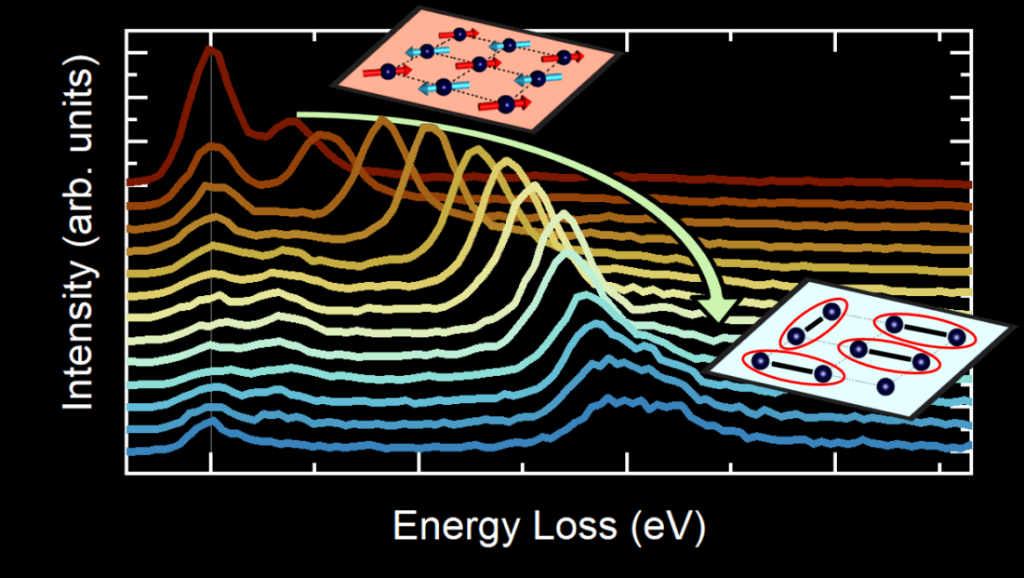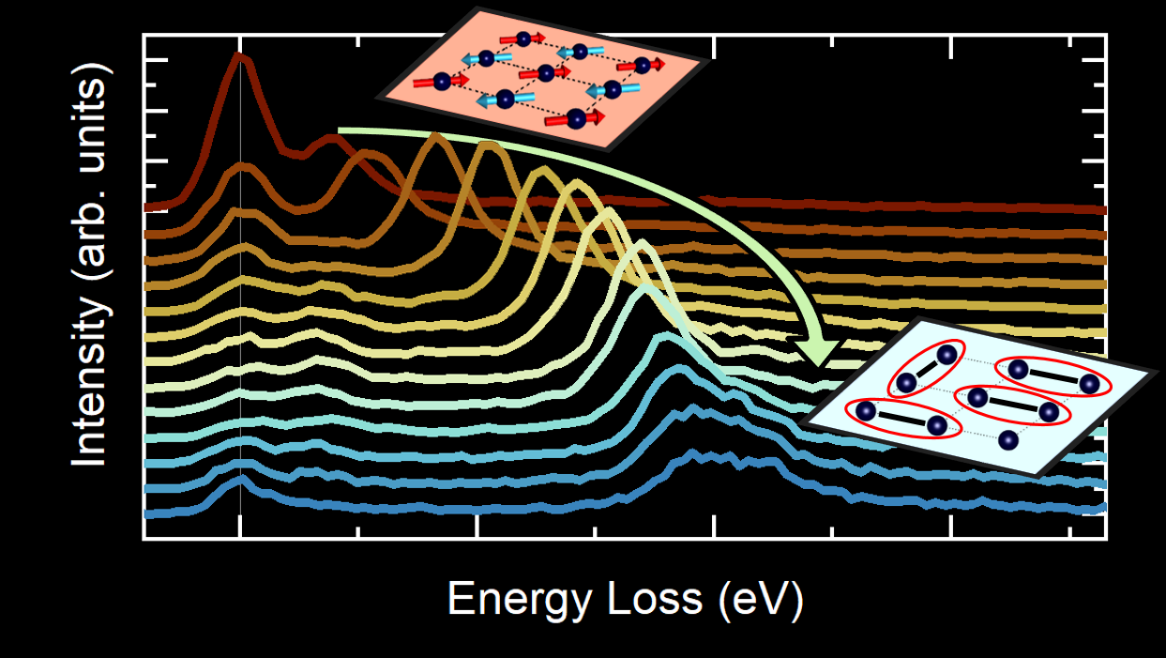Fractional Spin Excitations in the Infinite-Layer Cuprate CaCuO2
All high-temperature superconducting cuprates share a fundamental building block: CuO2 layers arranged in a square lattice, each site having a single unpaired spin that interacts with its neighbors through strong antiferromagnetic couplings. The simplicity of the structure, however, veils a deeper complexity: Theoretical studies suggest that this spin-1/2 square-lattice antiferromagnetism is not stable. Strong couplings to other spins can trigger quantum phase transitions. The fingerprint of such transitions is the splitting of the usual bosonic spin waves into pairs of fermionic excitations (or spinons), though experimental evidence of this fractionalization has so far been scant. Here, we report sound evidence of this phenomenon thanks to unprecedented data quality and the right choice of sample.
We use resonant inelastic x-ray scattering to investigate the magnetic spectrum in the cuprate CaCuO2, whose crystal structure enhances the long-range magnetic couplings even with respect to other cuprates. Through an innovative combination of measurements with ultrahigh resolution and full polarization control, we find that, despite the presence of long-range antiferromagnetic order, the spin-wave quasiparticle peak in the short-wavelength region breaks into a continuum of high-energy states, which is related to spinon pairs.
This work demonstrates that the complexity of the spin-1/2, antiferromagnetic square lattice has yet to be fully unraveled and paves the way for future studies in the field of quantum magnetism.



Comments are closed